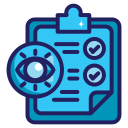Enhancing Stakeholder Communication through Visualization
Chosen theme: Enhancing Stakeholder Communication through Visualization. Welcome to a space where complex ideas become clear pictures, meetings move faster, and decisions feel confident. Stay with us, subscribe, and turn every conversation into a shared visual story that unites your stakeholders.

Map Questions to Visuals
Every question deserves a fitting visual. Trends love line charts, comparisons prefer bars, and proportions belong in stacked bars rather than flashy pies. Start with the question, then choose the form that answers it fastest and clearest.
Avoid the Usual Traps
Ditch 3D effects, crowded legends, and kaleidoscopic palettes. Focus on preattentive attributes like position and length, and maintain consistent scales. Small, disciplined design choices build credibility with stakeholders who value clarity over decoration.
Storytelling Dashboards that Speak to Decisions
Anchor your dashboard with a simple story: goal, current reality, drivers, and next actions. We once reframed a chaotic product dashboard into four panels and reduced meeting time by half because the path to decisions was unmistakable.
Collaborative Workshops Powered by Visualization
Mapping the stakeholder journey reveals friction points that spreadsheets miss. In a procurement initiative, a simple swimlane map exposed approval bottlenecks. The team co-created fixes on sticky notes, and cycle time dropped within one quarter.
Collaborative Workshops Powered by Visualization
When discussions spiral, sketch options in real time. Seeing alternatives side by side disarms opinion battles. People negotiate with the drawing, not each other, making progress feel safe and tangible without escalating tension.


Accessibility and Inclusivity in Stakeholder Visuals
Color, Contrast, and Clarity
Ensure sufficient contrast and avoid color-only encoding, considering common color-vision deficiencies. Use patterns, labels, and position to signal meaning. Accessibility is not a constraint; it is an amplifier of understanding for every stakeholder.
Language, Labels, and Legends
Plain language beats jargon. Put labels where eyes need them, reduce legend hopping, and define acronyms once. Stakeholders appreciate visuals that respect time and attention, especially when decisions are urgent and consequences are significant.
Designing for Neurodiversity
Chunk information, reduce visual clutter, and provide predictable layouts. Offer alternative formats, like a text summary after each visual. Share how inclusive design changed engagement on your project, and subscribe for checklists you can reuse.


Define Success Up Front
Pick metrics that matter: time-to-decision, number of clarifying questions, and post-meeting confidence ratings. Establish a baseline before introducing visuals so improvements are visible, credible, and meaningful to your leadership team.

Run Lightweight Experiments
Pilot a redesigned chart in one meeting, compare outcomes, and iterate. We A/B tested two roadmap visuals and saw a 30 percent drop in off-topic questions because the chosen layout emphasized milestones and dependencies with unmistakable clarity.

Share Wins and Lessons
Publish short before-and-after stories so practices spread. Invite colleagues to contribute examples, and comment with your own experiments. For ongoing patterns, subscribe—together we will refine the craft of visual communication for stakeholders.
